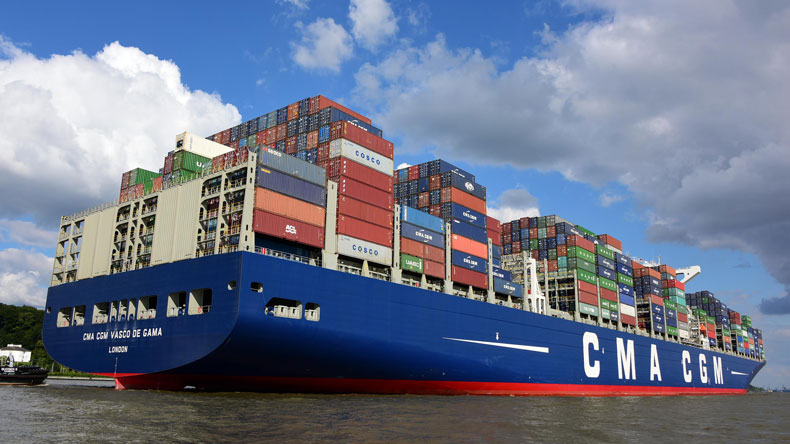Mark Szakonyi, Executive Editor at JOC.com writes of the last two years since the Canal was expanded and its impact on shipping.
wo years after the opening of the $5.4 billion larger locks, the Panama Canal has racked up a series of wins, from attracting services from the Suez Canal to seeing carriers deploy larger ships sooner than expected. And Administrator Jorge Quijano expects to attract more services away from the Suez Canal as ocean carriers look for cost savings; the higher cost of fuel associated with the upcoming global low-sulfur rule can be reduced by taking the shorter route through the Panama Canal.
The potential to build new locks to handle vessels larger than 14,800 TEU will depend on the Panama Canal expanding its water reserve. Weather, Quijano told JOC.com, has become more erratic, with rainfalls more intense and less spaced out compared with decades ago. Increased demand from Panama’s growing population is also adding to water needs.
“If we are going to have more transits, then you will have to have more water,” Quijano said, adding that it takes 55 million gallons of fresh water to bring ships through the waterway.
The Panama Canal Authority is studying how to construct a third and multipurpose reservoir and determining whether there is need for a larger set of locks to handle ships exceeding 14,800-TEU capacity. Before the new locks opened in July 2016, the canal’s container ship handling ability maxed out at 5,000 TEU, and the average ship had a cargo hold of just 4,000 TEU. The largest ships traversing the canal’s new locks have been 14,800 TEU, with the average transit a ship of 6,000 TEU.
Paralleling the scale-up of vessels transiting the canal has been an acceleration of the bleed of Asia imports from the US West Coast to the East and Gulf coasts. The combined share of Asian imports moving through the East and Gulf coasts before the new locks opened was 32.5 percent, compared with the current share of 35.2 percent, according to PIERS, a sister product of JOC.com.
Although the canal authority is gauging the need for larger locks, Quijano noted there is a point of diminishing returns with increasing vessel size, and that consolidation and alliances have allowed carriers to increase vessel utilization.
The 22,000-TEU ship question
“Is it worth having a 22,000-TEU ship when it’s only 70 percent full? Those questions need to be answered. That’s basically the used capacity of a neo-Panamax vessel,” Quijano said. “I think we hit it just right with getting locks for the right size.”
Even the 14,000-TEU ships transiting the Panama Canal are only 80 to 90 percent full, he said, and they have about five more feet of draft before maximizing the waterway’s 50-foot draft.
For the Panama Canal, it’s not just about the size of the vessels, but the number of transits.
Quijano expects the frequency of container ship transits to increase as carriers seek to mitigate rising fuel costs driven by the International Maritime Organization low-sulfur emissions rule, taking effect in 2020. Cost estimates to meet the rule, requiring the reduction of emissions to 0.5 percent, range in the billions of dollars.
Although bunker fuel prices are up more than 50 percent compared with a year ago, global charter rates hit a five-year low last month. “As charter rates go down and fuel goes up, Panama Canal offers a shortcut,” he said.
The Panama Canal has nearly recovered container ship transits it lost to the Suez Canal before the expansion, with the former handling 73 percent of headhaul traffic compared with 48 percent in January 2016, shipping analyst Alphaliner said in a January research note. Since it reduced tolls for backhauls last year by $10 to $15 per TEU for ships with capacities of 6,000 TEU and more in October, the Panama Canal has attracted a Cosco service and expects to announce another in the coming months, Quijano said.
The Suez Canal remains a competitor for container ship transits, although the threat of a Nicaragua canal has diminished, he said. Quijano said no construction has begun and that its key investor, Chinese billionaire Wang Jing, has abandoned the project. In a South China Morning Post report on mounting skepticism of the likelihood of the $50 billion effort, Nicaraguan authorities said Wang’s HK Nicaragua Canal Development Group is still proceeding with the project. Considering the cost and that it would have to compete with the Suez and Panama canals, Quijano doesn’t expect the Nicaragua Canal to ever be completed.
“For them to make money on it, they would have to charge less than we charge,” he said, “and the cost of that investment would require them to charge double what we are charging” to recoup capital costs.
Contact Mark Szakonyi at mark.szakonyi@ihsmarkit.com and follow him on Twitter: @szakonyi_joc.
